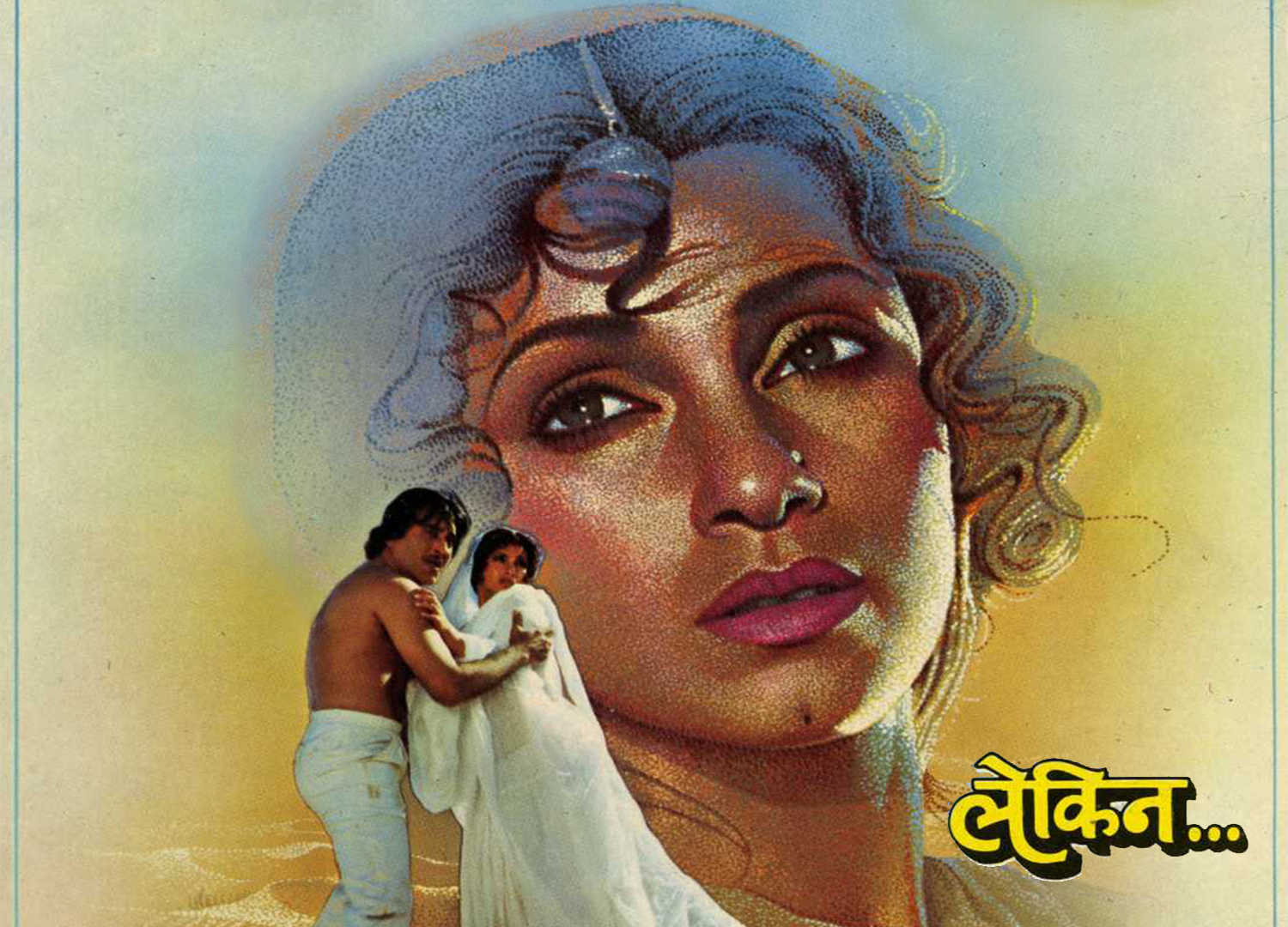On the 27th anniversary of the film (it was released on 11 October 1991), we look back at a masterpiece that should not be forgotten.
Revisiting Gulzar's Lekin...: An ode to lost souls and visual poetry – Anniversary special
Mumbai - 11 Oct 2018 7:00 IST


Anita Paikat
From Mere Apne (1971) to Hu Tu Tu (1999), lyricist-screenwriter Gulzar has directed 17 films. Lekin... (1991), starring Dimple Kapadia, Vinod Khanna, Hema Malini and Amjad Khan, remains one of his masterpieces. The film won five National awards — Best Playback Singer, Best Lyrics, Best Music Direction, Best Art Direction and Best Costume Design.
Though Lekin... is a loose adaptation of Rabindranath Tagore's short story Kshudhit Pashaan (Hungry Stones), it has the stamp of Gulzar all over with its poetic narrative and cathartic end.
The film begins with historian and curator Samir (Khanna) being assigned to visit an abandoned palace in Rajasthan and get its artefacts to a museum. There he repeatedly encounters a lost soul Reva (Kapadia) and is convinced she needs his help to be freed. The film is based on his quest and her freedom.
While this could have been like any other ghost mystery, Gulzar's mastery over the narrative ensures that it does not remain just that. Here is not a troubled soul wanting to avenge an injustice, but one that is trapped between life and death because of a traumatic experience. She is stuck in the time and space of her last moments, refusing to cross the desert and free herself and, at the same time, too scared to go on living.
Gulzar makes his ghost believable and realistic by simply not treating her as one. She exists in another time and space, and the scenes when she meets Samir are treated like a dimension where our reality meets this alternative reality. The director's craft in achieving this seamlessly without the use of many words is commendable.

Kapadia as the forlorn soul and Khanna as the saviour are impressive. The actress's expressive eyes convey more than the scant dialogues she has in the film while Khanna's reserved and honest performance will come as a surprise to those who have only watched him in mainstream blockbusters. He is far from the action hero here. How we wish he had done more such films.
The film was presented by singer Lata Mangeshkar and produced under the banner of Dinanath Kala Mandir, named for her great singer-actor father Pandit Dinanath Mangeshkar. The music was composed by her brother Hridaynath Mangeshkar.
With such stalwarts behind the film, its music could not but be a masterpiece. Though 'Yaara Silee Silee' remains the most famous song from the album, 'Kesariya Baalama O Ri', 'Mai Ek Sadi Se Baithee Hoon' and 'Surmai Shaam Iss Tarah Aaye' not only fit perfectly in the plot but are also beautiful creations on their own.
Another department that deserves commendation is costume design, which was headed by Academy award-winning designer Bhanu Athaiya. The dressing style of each character is realistic and simple and unique, and allows the viewers to distinguish characters just by their clothing.
For example, even in the scenes where Reva is shown from far in the darkness, the viewer is able to identify her by her dressing. Also, one can recognize the evil king from his silhouette as his attire has sharp edges, from the pugri (turban) to the rigid flow of his kurta.
Gulzar was poetic even in naming the film. Lekin... (translated as 'but'), with its ellipses, could be read from the perspective of any of the film's protagonists. For Reva, it depicts her stagnancy in time and space; for Samir, it symbolizes the fight between his scientific reasoning and the paranormal experiences.
All these aspects considered, Lekin... is a film that should not be forgotten, definitely not by a Gulzar fan.




